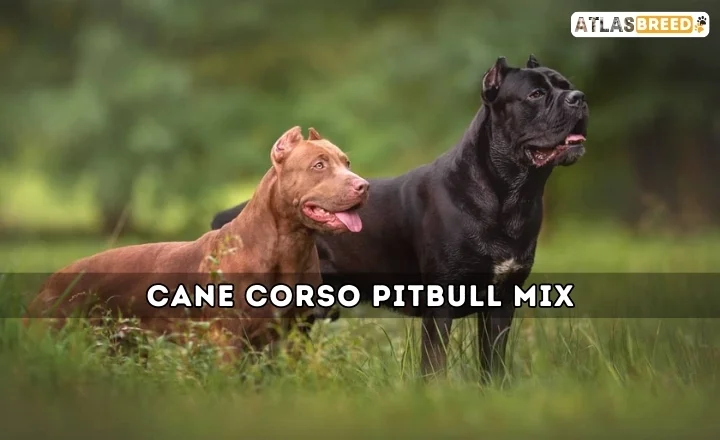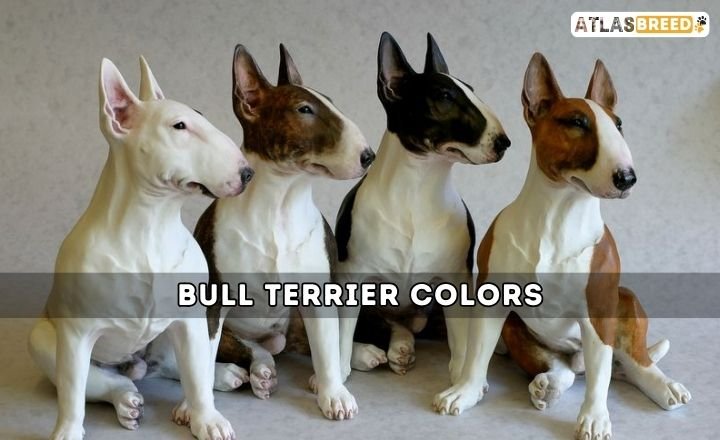Few dog breeds can rival the Japanese Akita’s majestic presence and noble demeanor. Renowned for their loyalty and dignified stature, these dogs are not just companions; they are living embodiments of tradition and culture.
Yet, beyond their impressive temperament lies another captivating aspect: their striking Japanese Akita colors. From the classic white to vibrant brindles, each hue tells a story that intertwines with centuries of history and significance.
Non-standard And Standard Akita Inu Colors
The Akita Inu, renowned for its majestic stature and noble demeanor, showcases an array of striking Japanese Akita colors that reflect its rich heritage. Traditionally, the breed is known for its classic hues—white, brindle, and various shades of red—. Still, it’s the unique combinations and lesser-known color variations that truly capture the imagination.
Through selective breeding practices, non-standard colors such as blue or fawn have emerged in recent years. These variations add visual appeal and open discussions about breed standards and the implications of these aesthetic preferences within the dog show community.
| AKC | FCI | KC | |
| RED | accepted | accepted | accepted |
| SESAME | not accepted | accepted | accepted |
| BRINDLE | accepted | accepted | accepted |
| WHITE | accepted | accepted | accepted |
The Red Akita Inu
The Red Akita Inu, with its striking hue, captures the essence of this noble breed. This vibrant coloration ranges from deep russet to bright copper, often accented by white markings that highlight their expressive features.
The contrast between the red coat and those ivory patches creates an eye-catching synergy reminiscent of Japanese artistry, bridging natural beauty with cultural significance.
The Sesame Colored Akita Inu
This coloration is not merely aesthetic; it symbolizes the dog’s rich heritage and remarkable adaptability. The color sesame can vary in shade—from a soft fawn to a deeper reddish hue—each variation contributing to the dog’s personality and flair.

The rarity of the sesame Akita often elicits intrigue from enthusiasts and potential pet owners alike. While traditional colors like white and brindle are more commonly recognized, sesame offers a refreshing twist on conventional expectations.
Beyond aesthetics, this color pattern further enhances the breed’s already commanding presence, showcasing their dignified stance and expressive face.
The Brindle Patterned Akita Inu
The Akita Inu is celebrated not only for its majestic demeanor but also for the stunning variety of colors that adorn its coat. Among these, the brindle pattern stands out as one of the most captivating expressions of this breed’s beauty.
Characterized by a mix of dark and light stripes—often merging in shades of fawn, black, or even a hint of red—brindle Akitas possess an almost hypnotic appearance. Each individual presents a unique tapestry, marking them as distinct within their lineage and offering an ever-changing canvas reminiscent of nature’s artistry.
While standard colors like white or various shades of brown hold their charm, it is the striking Japanese Akita colors that elevate brindle to a new level. This traditional hue is steeped in cultural significance; brindle Akitas were often admired in Japan not just for their looks but also for their symbolism representing strength and resilience.
The White Akita Inu
Among the array of striking Japanese Akita colors, the white Akita Inu stands out as a symbol of purity and elegance. This stunning variant is not merely a color choice but embodies a rich cultural significance in Japan.
Historically, the white Akita has often been associated with loyalty and loyalty—a reflection of the legendary Hachiko’s unyielding devotion to his owner. This connection deepens one’s admiration for these majestic dogs, enriching our understanding beyond their aesthetic appeal.
Their soft, snow-white coats provide an excellent canvas for intricate markings; subtle hints of cream or pale hues can enhance their gentleness and charm gradually revealing more depth than initially perceived. As collectors cherish unique pieces in an art gallery, dog enthusiasts find joy in celebrating each variation, particularly those as striking as the white Akita Inu—it’s all too easy to get lost in their beauty!
A Deep Dive Into Akita Inu Genetics
The genetics of the Akita Inu reveal a rich tapestry of traits that influence not only their appearance but also their temperament and health. Striking Japanese Akita colors stem from a complex interplay of genes, with dominant alleles responsible for the classic brindle, white, and pinto patterns.

Understanding this genetic blueprint can provide enthusiasts with insights into potential offspring characteristics, enhancing breeding decisions that celebrate both aesthetic beauty and sound behavior.
Eumelanin Colors
The genetic makeup of the Akita Inu is a fascinating narrative that unfolds in their striking colors, particularly the eumelanin variants. Eumelanin can manifest as either black or brown pigments, profoundly influencing the coat color of these majestic dogs.
The interplay between these pigments creates a rich tapestry of hues, from deep brindles to dappled blacks that shine like onyx under sunlight. Understanding this genetic architecture not only unveils why some Akitas have such visually arresting coats but also highlights inherited traits affecting temperament and health.
Phaeomelanin Intensity
The genetics of the Akita Inu’s striking Japanese colors are a fascinating interplay of melanin production, particularly focusing on phaeomelanin, which gives rise to the breed’s warm, reddish hues. These pigments not only determine the iconic shades seen in Akitas but also reflect a broader narrative around their heritage.
White Spotting
The genetics of Shiroi han-ten, or white spotting, in Akita Inu can be quite fascinating. Recent studies suggest that this unique trait results from specific gene interactions rather than singular genetic markers.

When observing the striking Japanese Akita colors—from rich brindle to serene white—one may notice varying degrees and patterns of white markings. Researchers have identified several loci involved in pigmentation that influence how these colors manifest, offering insight into why some Akitas flaunt a more pronounced white pattern than others.
Akitas And Patterns
Akitas, known for their majestic stature and loyal demeanor, boast a remarkable variety of striking colors that reflect their rich heritage. The classic Akita coat can feature shades ranging from pure white to deep brindle, but what truly captivates dog lovers is the unique blend of colors and patterns found in these dogs.
For instance, a pinto pattern combines solid patches of color with striking white areas, crafting an eye-catching look that highlights each dog’s individuality. This diversity not only enhances the aesthetic appeal but also has historical roots; certain patterns were often favored by Japanese nobility as symbols of status.
Eye and Nose Colors in Japanese Akita
The striking Japanese Akita is a feast for the eyes, with its diverse array of coat colors providing a stunning backdrop to its equally captivating eye and nose characteristics. Typically, Akitas exhibit deep-set eyes that vary in color from dark brown to lighter tones, creating a distinctive contrast against their fur.
These expressive eyes not only reflect their loyal and noble temperament but also signify the breed’s keen intelligence. For enthusiasts and prospective owners alike, recognizing the relationship between an Akita’s eye color and its mood can deepen the bond they share; for instance, a glint of warmth in their gaze often indicates affection toward family members.
Akita Inu Coat Types
The Akita Inu, renowned for its majestic stature, showcases a variety of coat types that not only enhance its beauty but also reflect its rich heritage. One cannot overlook the striking Japanese Akita colors that bring vibrancy to this breed.
While the classic white and brindle are well-known, those with a keen eye may appreciate lesser-seen hues like pinto patterns or even shades of sesame—a unique mix of red with black-tipped hairs.
Each color is accentuated by a double coat: the outer layer is coarse and water-resistant, while the undercoat is soft and insulating, exemplifying the breed’s origins in Japan’s snowy regions.
Other Coat Types in Akita Inu
In addition to the well-known brindle and pinto patterns, Akita Inus exhibits an array of striking Japanese Akita colors that highlight the breed’s majestic heritage. The signature thick double coat not only serves as a barrier against harsh weather conditions but also comes in shades that captivate dog lovers.
For instance, the white variety showcases an almost ethereal beauty, embodying purity with its pristine, snow-like appearance. Meanwhile, colors ranging from red to fawn can surprise enthusiasts with their rich hues and distinct markings.
Conclusion
The striking colors of Japanese Akitas not only enhance their majestic appearance but also reflect the rich history and cultural significance associated with this noble breed. From the iconic brindle patterns to the pure white coats, each color tells a unique story that resonates with dog lovers around the world.
As you consider welcoming an Akita into your home, take time to explore these beautiful color options and find one that resonates with you. Embrace the journey of discovering your perfect companion today!
FAQs
What color is an Akita’s nose?
Broad and black. Black noses on white Akitas are preferred, but a lighter colored nose with or without shading of black or gray tone is acceptable. Disqualification – partial or total lack of pigmentation on the nose surface.
What color is a wolf’s nose?
In addition, a wolf’s muzzle should be the same length as the distance from the eyes to the base of the skull. Lips should be black and close fitting and the nose should be large, black, and well-textured.






